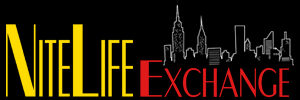
By Marilyn Lester****Chances are if you’re reading NiteLifeExchange.com you’re already a champion of the arts—and therefore understand the vital necessity to cultivate and teach the arts to succeeding generations of children.
You may also be part of a minority—for as you probably also know, arts funding at all levels has been shrinking over decades. Government and private enterprise (read corporate support) has been steadily dwindling. Arts education in the schools has been disappearing at an alarming rate.

“You have to be carefully taught,” goes the song. If we don’t teach the value of the arts, how is its significance to be perpetuated? And, if the love and appreciation of arts diminishes—and eventually the disappearance of the history of the arts, what then happens? How many of you, upon learning that cultural icon, Doris Day, had died at age 97 knew who she was? And if you did, were you aware of those who hadn’t a clue about her history and importance in the art of film, television, radio, song and recording?
Recently, we attended an end-of-year showcase, entitled Hatched, produced by the freshman musical theater class (graduating class of 2022) of Pace University. This outing was the first time Hatched was produced not with original songs but interpreting musical theater works in a cabaret setting (Feinstein’s/54 Below). The premise was to test if musical theater is still relevant—in itself an interesting concept—and to present the material with complete freedom of interpretation.
Accompanied by a solid core of students on piano, bass, drums and strings (a cello and two violins), the offerings ranged from fairly traditional to out of the box approaches. Gender-bending was a favored theme. There were switcheroos on “Ribbons Down My Back” (Ernest Mingo), “That’ll Show Him” (Bobby Ellis), “I Could Have Danced All Night” (Elliot Hicks), “The Sadder But Wiser Girl” (Zelda Rogers), “There But for You Go I” (Sofia Khwaja), “Hello Young Lovers” (Charlie Baez) and “Ilona” (Alyssa Cassesse). A couple of tunes got country-fied: “This Nearly Was Mine” (George Franklin) and “Come to Me, Bend to Me” (Liam Pearce, Sami Staitman, Elliott Hicks). Comedic turns appeared with “Look What Happened to Mabel” (Darah Abrams), “All Er Nothin'” (Aubrie Knapp) and “Not Since Ninev ah” (Karen Hazime).
ah” (Karen Hazime).
Other numbers were: “I’ll Show Him” (Mia Mooko and Savannah Jackson-Paige), “If I Loved You” (Sabrina Santana and Liam Pearce), “You Are Never Away” (Liam Pearce), “When I’m Not Near the Girl I Love” (Joe Fiordaliso-Riahi), “So Far” (Garrett Hoy), “The Next Time It Happens” (Ali Guiterez), “Somebody, Somewhere” (Grace Lord), “What Good Would the Moon Be” (Jacob Ward), “Yes My Heart” (Isabella Lopez), “C’est Moi” (Pragun Bhardwaj), “I Am Not at All in Love” (Kaybri Wolff), “Never Will I Marry” (Emma Diner), “If I Were a Bell” (Adriana Medina-Santiago), “What More Do I Need” (Madison Wechsler), “Don’t Rain on My Parade” (Celia Gooding) and “My Man” (Adriana Medina).
This group of highly diverse young people—all of them around the age of 19—took the ball and ran with it with energy and enthusiasm. The show was full of freewheeling fun, especially with a lot of material that’s not usually heard. What’s heartening is that there are many equivalents around the country. It’s a fact that every single state in the Union has at least one college-level school of theater in its curriculum. There are masses of them, actually. The students who are enrolled in these programs, both undergrad and graduate, possess a creative drive that’s hopeful for the future of the arts, directly and indirectly. Even if there are those who don’t make theater their careers (or any of the other arts, for that matter), they’ve learned invaluable life skills and will, presumably, carry on a tradition of arts appreciation and advocacy.
“I think there’s a perception that the arts are secondary to core subjects like reading and math. But what the research would suggest is that by participating in theatre, students learn creativity, communication, collaboration, and critical thinking.”—Julie Cohen Theobald, president, Educational Theatre Foundation.
As we move forward, especially with critical elections coming up in 2020, ponder this: unlike most advanced countries (certainly Western/European countries), the US has never had a cabinet level position for the arts.
What does that say about how a government and its peoples value the arts?
The future of the arts is a concern NiteLife Exchange intends to pursue and cover. To be announced imminently is a new feature—a blog by Kevin Kennison tracking the 2020 Presidential candidates and their stances on arts funding. Stay tuned.








Leave a Reply